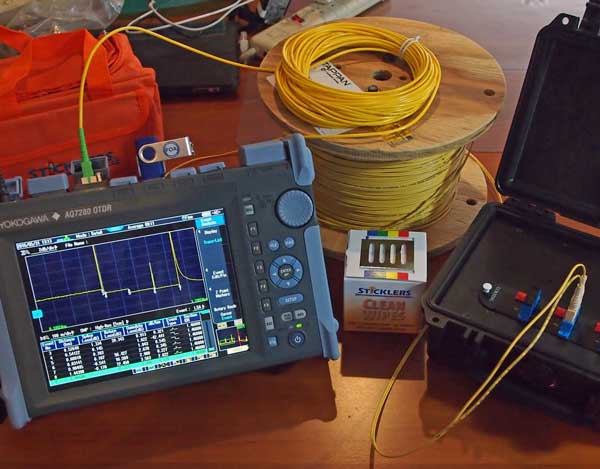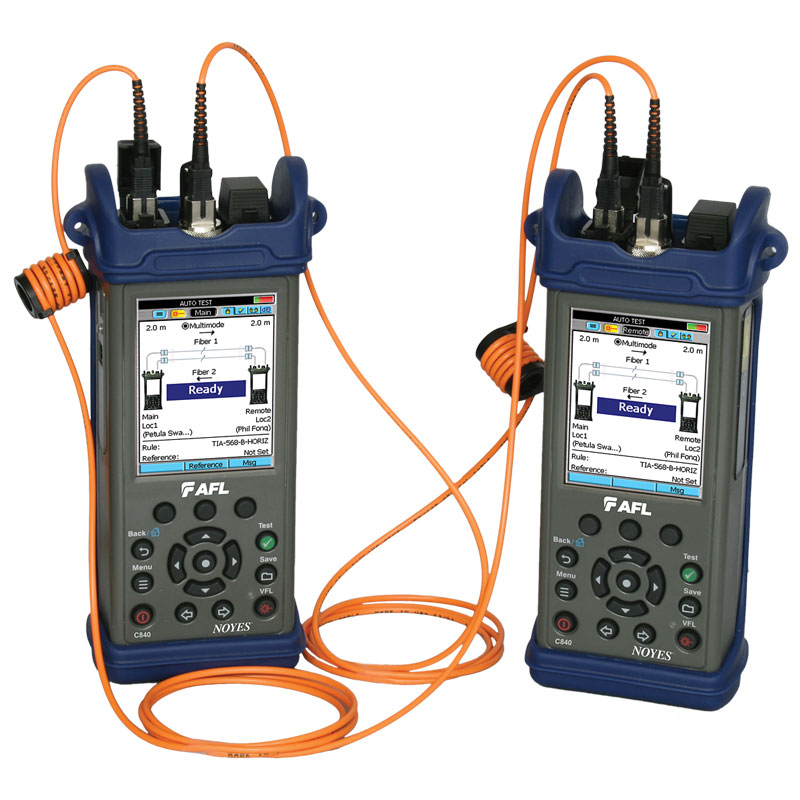Challenges manufacturers face when adopting robotic vision systems
Recognizing Just How an Optical Measurement System Boosts Accuracy in Industrial Applications
Optical measurement systems play a crucial role in enhancing accuracy throughout numerous commercial applications. By leveraging advanced modern technologies such as laser interferometry and 3D imaging sensing units, these systems use high-resolution, non-contact measurements. This capability lessens the threat of damaging delicate components while making sure precision. However, the impact of these systems prolongs beyond plain measurements. Discovering their advantages, applications, and future trends exposes a complex landscape of innovation and difficulties that benefits closer examination.
The Essentials of Optical Measurement Systems
Optical measurement systems serve as important tools in different commercial applications, giving specific information collection and evaluation. These systems make use of light as a key methods of measurement, leveraging optical principles to analyze dimensions, settings, and surface area attributes of objects. They incorporate parts such as lasers, cameras, and sensors, which interact to catch high-resolution images and information.
The technology makes it possible for non-contact dimensions, minimizing the danger of damaging delicate parts. Optical measurement systems are flexible, discovering utility in quality assurance, assembly confirmation, and dimensional evaluation across various fields. They are particularly efficient in atmospheres where conventional measurement techniques may fall short, such as gauging complex geometries or observing rapid activities.
As industries remain to advance, the assimilation of optical measurement systems will certainly stay critical for ensuring precision and effectiveness, ultimately enhancing item top quality and operational performance in different making procedures.
Key Technologies Behind Optical Measurement
Key technologies such as laser interferometry techniques and 3D imaging sensors play a crucial role in the performance of optical measurement systems (robotic vision). These modern technologies allow accurate measurements and thorough analysis in various commercial applications. Comprehending their capabilities is important for harnessing the full possibility of optical measurement systems
Laser Interferometry Techniques
Countless laser interferometry methods have actually revolutionized the field of optical measurement, supplying unmatched precision and accuracy in various commercial applications. These techniques use the interference of systematic light waves to determine range, displacement, and surface abnormalities with nanometer-level precision. Usual techniques consist of Michelson interferometry, which divides a beam and evaluates stage changes, and Fabry-Pérot interferometry, recognized for its high resolution in gauging tiny adjustments. Additionally, laser Doppler interferometry utilizes frequency changes to examine rate, making it invaluable in dynamic measurements. The versatility of these methods permits their assimilation right into diverse manufacturing procedures, boosting quality assurance and making sure adherence to rigid tolerances. Therefore, laser interferometry remains to play a crucial duty in progressing industrial measurement criteria.
3D Imaging Sensors
Improvements in measurement modern technology have actually caused the advancement of 3D imaging sensors, which play a considerable role in optical measurement systems. These sensing units capture three-dimensional information through numerous methods such as triangulation, time-of-flight, and organized light. By properly reconstructing the form and measurements of objects, 3D imaging sensing units enhance the accuracy of dimensions in industrial applications. They provide real-time responses, helping with quality assurance and ensuring that components fulfill rigorous specs. Furthermore, their ability to operate in tough atmospheres, such as varying lights problems, makes them invaluable in producing procedures. As sectors increasingly embrace automation, the assimilation of 3D imaging sensing units right into optical measurement systems is expected to drive additional enhancements in efficiency and accuracy.
Benefits of Optical Measurement in Industry
Although typical measurement techniques have actually long been the criterion in industrial settings, optical measurement systems supply significant advantages that boost accuracy and performance. These systems utilize light to capture data, resulting in high-resolution dimensions that are often unattainable with conventional methods. The non-contact nature of optical measurements decreases the risk of damaging delicate components during the evaluation process. Furthermore, the rate of optical measurements allows for fast information procurement, promoting prompt decision-making in hectic industrial settings.
Optical systems are versatile, efficient in gauging different products and forms without the demand for comprehensive recalibration. This flexibility contributes to boosted workflow and productivity. The automation possibility of optical measurement systems decreases human mistake, making certain consistent high quality control. On the whole, the integration of optical measurement technology represents a modern change towards improved precision and dependability in commercial operations, ultimately leading to enhanced item quality and functional effectiveness.
Applications of Optical Measurement Systems

Optical measurement systems play an essential function in boosting manufacturing process optimization by offering precise data for decision-making. These systems ensure top quality control assurance through real-time monitoring and analysis of manufacturing metrics. As industries progressively adopt these technologies, their impact on effectiveness and product reliability comes to be apparent.
Manufacturing Refine Optimization
Enhancing production process effectiveness is progressively reliant on the assimilation of optical measurement systems. These systems offer real-time information on different specifications, permitting makers right here to examine processes with a high level of accuracy. By enabling exact measurements of dimensions, surface area characteristics, and product homes, optical measurement systems promote the recognition of inefficiencies and traffic jams in production lines. The immediate feedback from these systems encourages engineers to make enlightened decisions, leading to maximized read more machining, setting up, and finishing processes. Moreover, the capability to keep an eye on conditions continuously permits flexible modifications, lessening downtime and waste. As markets go for better performance and minimized operational costs, optical measurement systems emerge as vital devices for boosting manufacturing procedure optimization.

Top Quality Control Assurance
The assimilation of optical measurement systems significantly influences quality assurance assurance in industrial settings. These systems provide exact and non-destructive measurements, allowing makers to identify defects and discrepancies early in the manufacturing procedure. By using sophisticated imaging methods, such as laser triangulation and interferometry, optical measurement systems guarantee that components satisfy rigorous specifications. This promotes real-time monitoring, lowering waste and minimizing the danger of damaged products reaching the market. In addition, the data gathered can be assessed to fine-tune manufacturing procedures further, bring about continuous enhancement. Inevitably, the adoption of optical measurement systems improves dependability and consistency in high quality control, cultivating better self-confidence among stakeholders and customers alike in the end products supplied.
Instance Studies: Successful Implementations
Countless markets have actually effectively incorporated optical measurement systems to boost their functional effectiveness and product high quality. In the auto market, a prominent maker adopted a laser triangulation system to check the alignment of automobile parts. This execution considerably reduced assembly mistakes, leading to enhanced safety and security and minimized costs.
In the aerospace market, a leading aircraft manufacturer made use of optical width for accuracy measurements of generator blades, attaining a decrease in manufacturing resistances and far better efficiency click resources requirements.
Likewise, a customer electronic devices business applied optical measurement modern technology throughout the manufacturing of smartphone screens, causing improved quality assurance and a decrease in faulty products.
These study highlight how optical measurement systems not only improve accuracy yet likewise add to general functional efficiency, demonstrating their value across different markets. By resolving certain requirements, these systems have verified to be vital tools in contemporary industrial applications.
Challenges and Limitations of Optical Measurement
While optical measurement systems provide considerable advantages in different industrial applications, they are not without their difficulties and limitations. One significant concern is level of sensitivity to ecological problems, such as temperature level variations, humidity, and dust, which can negatively impact measurement precision. Furthermore, optical systems usually call for specific placement and calibration, making them vulnerable to human mistake during configuration and procedure. An additional constraint is the potential for interference from ambient light, which can misshape dimensions and demand complicated filtering system strategies. Moreover, certain products and surfaces may present difficulties, as reflective or clear features can bring about inconsistent analyses. The cost of high-quality optical parts and systems can additionally be an obstacle for some industries, limiting widespread fostering. Finally, specialized training is often required for employees to effectively operate and keep these systems, adding to the overall intricacy and functional obstacles.
Future Fads in Optical Measurement Modern Technology
As innovations in innovation continue to form commercial processes, the future of optical measurement systems is positioned for significant advancement. Arising fads suggest a change towards improved integration of artificial intelligence and device discovering, allowing systems to analyze data in real-time, recognize patterns, and enhance decision-making processes. Furthermore, the growth of miniaturized sensors and progressed optics is anticipated to result in even more small and versatile measurement remedies, making them easily accessible for a bigger series of applications.
Additionally, the incorporation of 3D imaging and high-resolution capacities will certainly enable extraordinary accuracy in measurements, which is crucial for markets such as aerospace and automotive. The press for automation and Sector 4.0 will certainly also drive the demand for optical measurement systems that can easily user interface with various other modern technologies. As these fads unravel, optical measurement systems will likely come to be indispensable to attaining greater effectiveness and accuracy across different commercial fields.

Regularly Asked Questions
Just How Do Optical Measurement Systems Compare to Conventional Measurement Techniques?
Optical measurement systems offer higher accuracy and rate compared to conventional methods - fibre testing equipment. They reduce human error, boost information collection performance, and provide real-time results, making them increasingly preferred in different commercial applications for specific measurements
What Industries Advantage one of the most From Optical Measurement Systems?
Optical measurement systems substantially profit markets such as aerospace, auto, and electronic devices. Their ability to offer high-precision measurements improves high quality control, reduces manufacturing mistakes, and boosts general performance, making them important in affordable manufacturing environments.
Can Optical Measurement Systems Be Custom-made for Certain Applications?
Optical measurement systems can undoubtedly be customized for details applications. By changing specifications such as wavelength, resolution, and calibration methods, sectors can customize these systems to meet unique accuracy and precision needs effectively.
What Is the Upkeep Need for Optical Measurement Systems?
The maintenance requirements for optical measurement systems commonly consist of routine calibration, cleaning of optical parts, and software updates. Complying with these methods guarantees accuracy, integrity, and longevity of the measurement devices in different applications.
How Do Environmental Elements Affect Optical Measurement Accuracy?
Environmental elements, such as temperature level changes, humidity, and dirt, greatly effect optical measurement accuracy. These aspects can misshape light paths and disrupt sensor analyses, ultimately compromising the dependability and accuracy of dimensions in commercial setups.